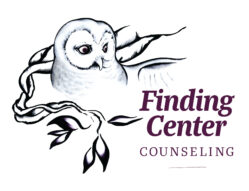Maybe you remember that graphic video shown in your health class, the one that seemed meant to scare you away from all things that might lead to baby making? U.S. current practices in health/sex education classes are often fear based. And as a 15 year-old client of mine said recently, “That just doesn’t work!”
She was sharing about how sex education, sexuality and gender are being addressed in her health class in middle school. While she has yet to watch the childbirth video mentioned above, she has heard from a panel of adults in their 50s and 60s on how hard it is to be LGBTQ and how to survive by hiding who she is. As a young woman who identifies as LGBTQ herself, she walked away terrified.
She also shared her teacher’s response to a question from a classmate who was wondering what to do if they think they might be pregnant. Instead of addressing the question, the teacher took it as an opportunity to emphasize why everyone should choose abstinence. After all, the student wouldn’t be grappling with such a difficult question if they’d just abstained, right? Again, “That just doesn’t work!”
Chatting about my client’s experiences with this teacher, the themes that kept coming up were fear and incomplete information. Even though this young lady has an amazingly supportive family and knows from personal experience that the world now is more accepting that the world the elders on the panel experienced as they grew up, she’s still feeling scared after these class conversations. And she wonders what it must be like for her peers who don’t have the kind of support she does.
Let’s talk about babies for a minute. According to data from the World Health Organization (WHO), early pregnancy and childbirth is the second leading cause of death among teenage girls. Think about that for a minute – that’s crazy! These statistics are global, so it may be tempting to think that these statistics don’t apply to us. However, creating fear and lack of access to resources can create some pretty unsafe situations for teens who get pregnant.
The Center for Disease Control (CDC) has some statistics about teen pregnancy that I find interesting. Teen pregnancy rates vary significantly by state and region. New England has some of the lowest rates of teen pregnancy: New Hampshire has a rate of 2.9%, Massachusetts is 3.7% and Connecticut is 4%. Compare that to some of the Southern states: Alabama is 11.4%, Arkansas is 12.9%, and Mississippi is 13.2%. I’m so curious to do some comparative research on this data. What are some of the contributing factors to these discrepancies?
Taking a quick look, it’s interesting to note that NONE of these six states require sex education be taught. However, Alabama, Arkansas and Mississippi do require that when sex education is provided, abstinence be stressed.
There are so many factors to consider – socio-economic status, race, overall birth rates, access to services, etc. – that a quick look doesn’t really do the question justice. That said, research has shown that youth who receive a Comprehensive Sex Education are more likely to have healthy relationships, delay sexual activity and avoid high-risk behaviors. Research has also shown, repeatedly, that Abstinence Only Sex Education does not delay sexual activity or reduce high-risk behaviors.
Today’s take away? Talk to your children about sex, sexuality and gender. Begin early, talk often, and keep the door of communication open. And as you do so, track if fear is part of your dialogue. If it is, I challenge you to think about how you could share the same information in a non-fear based way.

